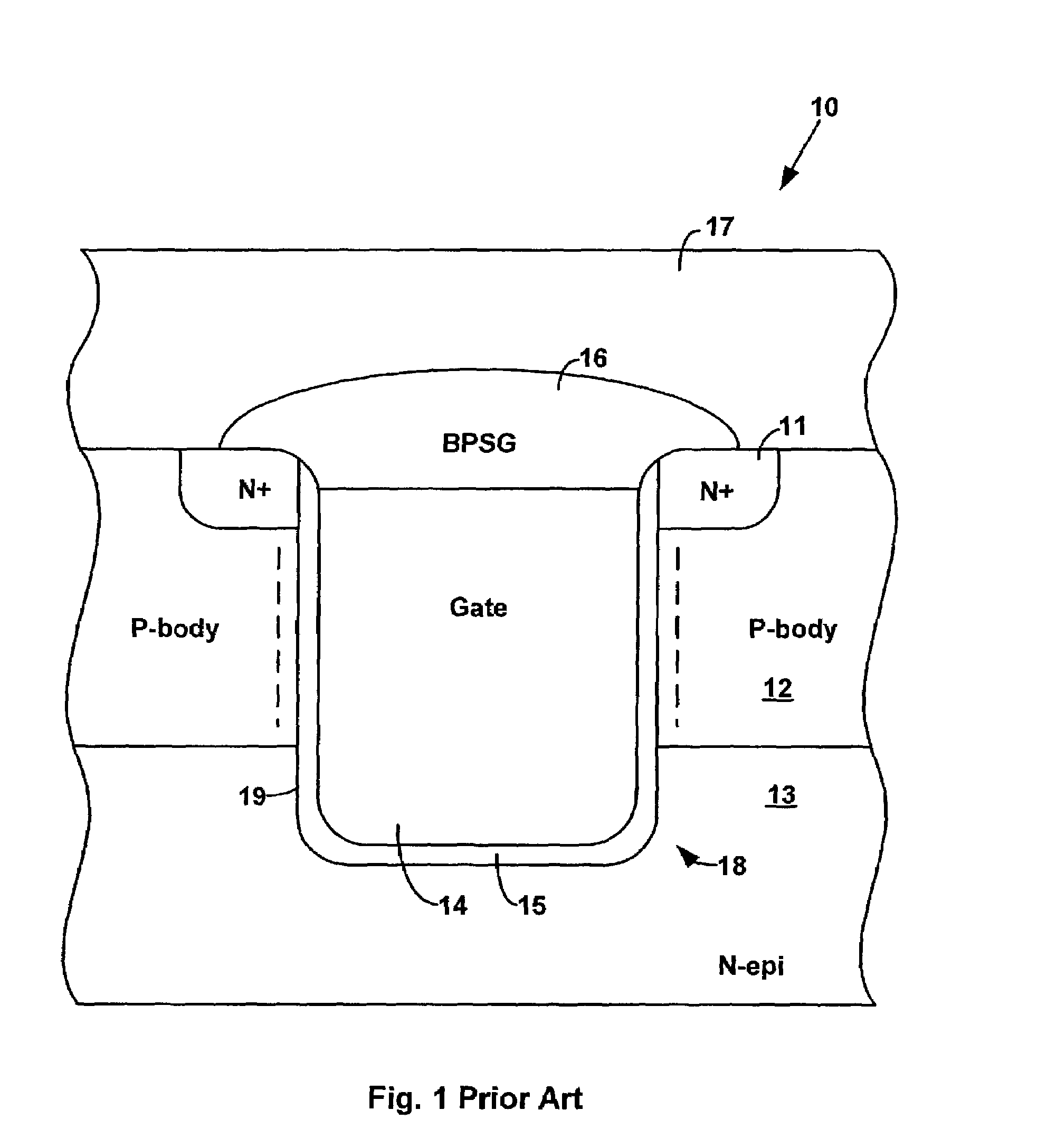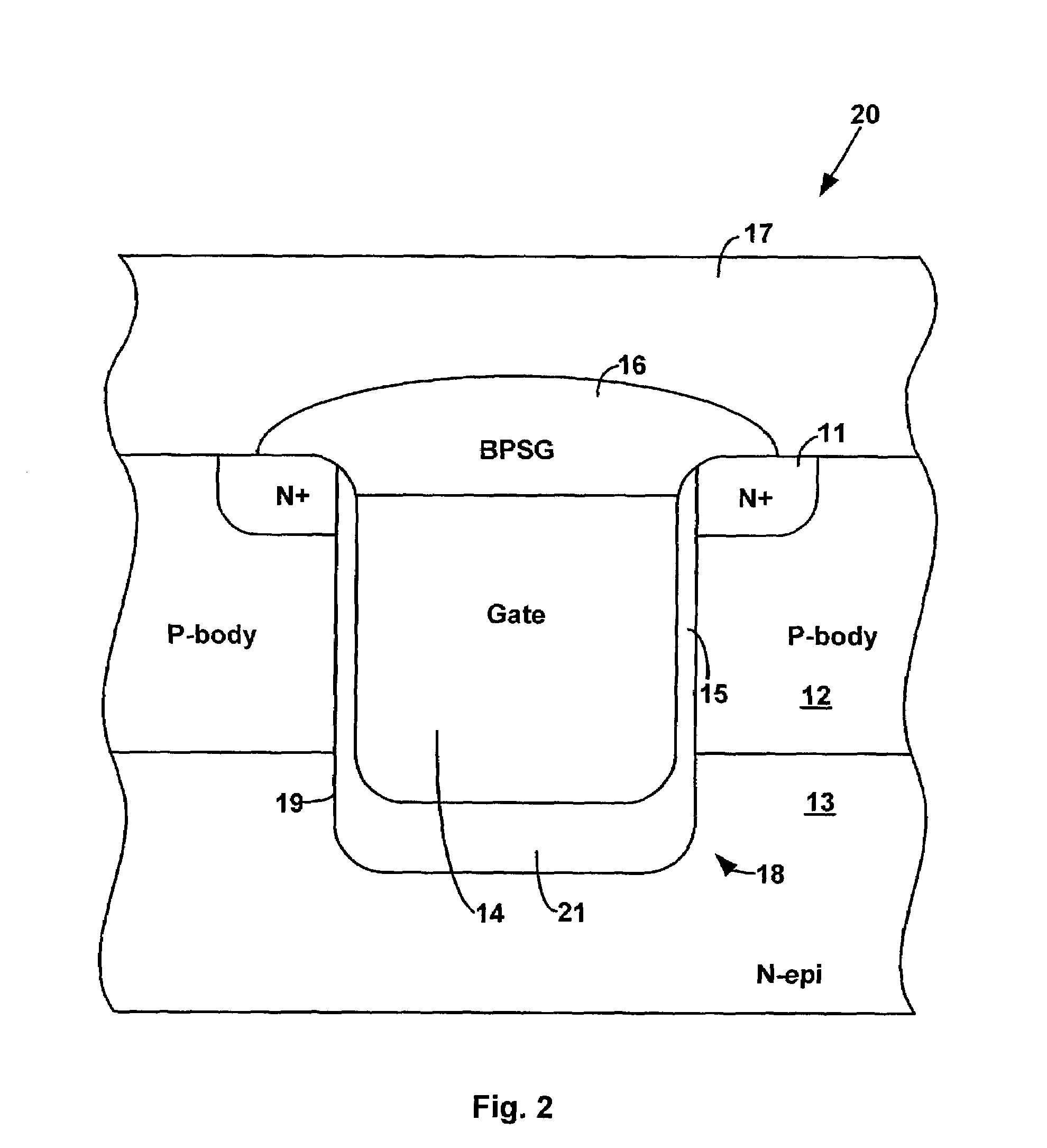Self-aligned differential oxidation in trenches by ion implantation
a technology of differential oxidation and trenches, which is applied in the direction of semiconductor devices, basic electric elements, electrical appliances, etc., can solve the problems of reducing the internal capacitance of mosfets, increasing the current carrying capacity, and reducing the on-resistance of devices, so as to increase reduce the growth rate of insulating layers
- Summary
- Abstract
- Description
- Claims
- Application Information
AI Technical Summary
Benefits of technology
Problems solved by technology
Method used
Image
Examples
Embodiment Construction
[0012]FIG. 2 is a cross sectional view of one embodiment of a trench MOSFET 20 in accordance with the present invention. In MOSFET 20, an n-type epitaxial layer 13, which may be an N− layer and is usually grown on an N+ layer (not shown), forms the drain of the MOSFET. A p-type body layer 12 separates the N-epi layer 13 from N+ source regions 11. Body region 12 is diffused along the side wall of a trench 19. Polysilicon gate 14 is formed in trench 19. The side walls of trench 19 are lined with a thin gate insulator 15 (for example, silicon dioxide). A thick insulating layer 21 (for example, silicon dioxide) lines the bottom of trench 19 in MOSFET 20. Thick insulating layer 21 separates gate 14 from N-epi layer 13 (the drain). Thick insulating layer 21 provides a more effective insulator than is achievable with the thin insulating layer 15 lining the bottom of trench 19 in FIG. 1. Thus, thick insulating layer 21 minimizes the gate-to-drain capacitance and yields a trench MOSFET 20 us...
PUM
 Login to View More
Login to View More Abstract
Description
Claims
Application Information
 Login to View More
Login to View More - R&D
- Intellectual Property
- Life Sciences
- Materials
- Tech Scout
- Unparalleled Data Quality
- Higher Quality Content
- 60% Fewer Hallucinations
Browse by: Latest US Patents, China's latest patents, Technical Efficacy Thesaurus, Application Domain, Technology Topic, Popular Technical Reports.
© 2025 PatSnap. All rights reserved.Legal|Privacy policy|Modern Slavery Act Transparency Statement|Sitemap|About US| Contact US: help@patsnap.com



